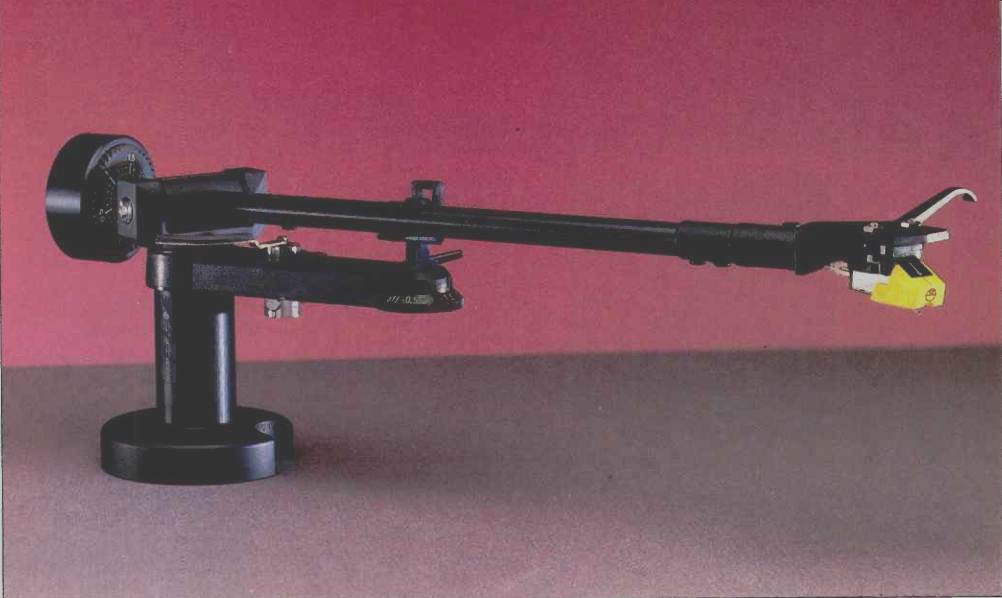
Manufacturer's Specifications:
Tonearm:
Type: Pivoted, static-balance, with re movable headshell.
Bearing Friction: Less than 50 mg, lateral or horizontal.
Effective Mass: Approximately 10 grams (varies with tracking force).
Tracking-Force Adjustment Range: 0 to 3 grams.
Cartridge Weight Range: 2 to 10 grams.
Pivot-to-Stylus Distance: 9 in. (22.9 cm).
Stylus Overhang: 1/16 in. (18 mm).
Effective Length: 8 5/16 in. (21.1 cm).
Price: $220; extra headshell, $24.
Cartridge:
Type: Moving magnet.
Frequency Response: 20 Hz to 20 kHz, ±2 dB.
Separation: Greater than 25 dB at 1 kHz.
Channel Balance: Within 2 dB at 1 kHz.
Recommended Tracking Force: 1.7 grams (at 20° C).
Recommended Load: 47 kilohms.
Tracking Angle: 20°.
Price: $185, replacement stylus, $111.
Company Address: c/o Audiophile Systems, 8709 Castle Park Dr., Indianapolis, Ind. 46256, USA.
--------------
When Linn Products of Scotland decided to introduce the Axis turntable with a lower price than their LP-12 Sondek, they also decided to make it available as a complete, self contained package with a tonearm and cartridge. The tone arm reviewed here is the Basik LVX and the cartridge is the K9, which are also available separately for mounting on other turntables. The Basik LVX was completely specified by Linn and is made for them by a Japanese manufacture which supplies tonearms to other companies. The K9 cartridge is a moving-magnet type which was designed by Linn and is also made in Japan.
The Linn Basik tonearm is very well finished and has an excellent feel. Tapping the tonearm near the headshell produces a "thwock," while the sound is more like "tank" when the arm is tapped near the pivot. The feel of the tonearm is very good, with extremely low friction in both the lateral and vertical planes. I couldn't feel any play in the bearings when I held the pivot steady with one hand and tried to force movement of the arm-tube with my other hand. The tonearm is finished in matte and satin black, with some chrome highlights provided by the arm-lift lever and the pivot screws. The calibration markings are in white and are very easy to read, even in dim lighting. My overall impression of the LVX arm was very favorable.
The user-replaceable stylus of the K9 cartridge is bright yellow, and it comes with a clear plastic protective cover that is easy to use. I recommend that you put it over the stylus assembly after each use, even though a locking device on the arm rest holds the tonearm very securely. The headshell is removable, but its locking screw gives it almost the integrity of a solid headshell built into the arm.
If you buy the Linn Axis turntable complete with the Basik LVX, the arm will already be mounted, but if you buy the Basik LVX to mount on another turntable, you will find that the tonearm mounting is fairly easy and straightforward. The tonearm base requires a central hole about 3/4 inch in diameter, plus three smaller holes to clear the hex bolts which fasten the base to the turntable platform or tonearm mounting board. The tonearm pillar slides up and down in the arm base to allow adjustment for different turntable heights. After the vertical tracking angle has been adjusted, a large hex screw in the arm base can be tightened to hold the arm pillar securely in place.
The arm rest is on the end of a platform which is cantilevered out from the arm pillar. This black plastic arm rest has a very good armtube locking device which I found quite easy to use. Located right under the arm rest is the antiskating or sidethrust adjustment dial. This dial is marked in grams so it can be set to correspond to the vertical tracking force. The dial turns approximately 240°; it is marked from 0 to 3.5 grams but actually turns past 3.5 to about 4.0 grams.
Below "0" is an "Off" setting, and I could hear a very distinct click as I turned the dial back and forth between the two positions.
Though setting the sidethrust dial to correspond to the vertical tracking force is a good compromise, I have found that the best way to set sidethrust is by listening to music.
The correct adjustment is achieved when the sound of a good stereo record is stable during high-level passages. If there is too much or too little sidethrust correction, the dynamic tracking force will be different in each channel. Of course, the whole problem of achieving the proper compensation for the effects of sidethrust is complicated by the fact that it is influenced by such things as groove diameter, rotational velocity, and dynamic level. The calibrated side-
thrust settings of the LVX serve as a good compromise for most listeners and as a good starting point for fussier ones.
The vertical tracking force is set by rotating the counter weight in a spiral groove at the rear of the tonearm. The counterweight is first set to balance the mass of the cartridge. Then, while holding the counterweight in one hand so it cannot turn, one rotates the dial with the other hand until the dial's "0 calibration is opposite a line on the top of the armtube. The tracking force is then adjusted by rotating the counterweight until the desired number is opposite this line.
The dial is clearly marked in white. with major calibrations in 0.5-gram steps and lines at 0.1-gram increments.
================
BACKGROUND REPORT
Last fall I travelled to Scotland to visit the facilities of Linn Products Ltd. and to meet the people behind the products. I was accompanied by Gene Pitts, the Editor of Audio, and Gary Warzin of Audiophile Systems, the importers of Linn equipment into the U.S. Upon arrival at Prestwick Air port, we were met by Alan Gibb, Linn's export sales manager. The next morning we headed for the Linn factory in Castlemilk, a suburb of Glasgow.
After an exciting ride on the wrong side of the road, Alan pulled up in front of a group of low buildings across from a cow pasture. (I never did find the castle!) All of the buildings are part of Linn Products except for one, in the middle, which is Castle Precision Engineering. This is the company where Ivor Tiefenbrun, the managing director of Linn, once worked for his father and where the dream of Linn began.

We toured the production area where the mechanical parts of the Sondek and Axis turntables are machined, treated, polished, and fitted together. I must admit that I was impressed. I also had a good feeling when Alan showed us what everyone at Linn considered to be their highest precision piece of manufacturing equipment, a CNC (computer numerical controlled) machine made in Elmira, N.Y., which is not far from my home town of Rochester. I reciprocated by teaching the Scots how to pronounce " Elmira." We also toured the engineering department and met Bill Miller, the main analog design engineer, who was working on a p.c. board layout with a CAD (computer aided design) system running on an IBM PC-AT computer. We were then shown Linn's large DEC computer system and the very high-performance Intergraph CAD system that is tied to a similar system in the offices of the London architectural firm which designed the new Linn factory. In addition to the heavy investment in computer equipment, Linn has made a serious commitment to software, including not only the writing of application-specific programs but the development of high-level language they call "linngo." It might come as a surprise, to those who see Linn's position as "anti-digital.' that much of the company's latest engineering efforts have gone into digital hardware design.
But they have directed their work into areas where they feel digital is best suited. such as the control and switching circuits in their LK1 preamplifier. This digital design work is being carried out mainly by Neil Gibson.
The mechanical design and packaging of Linn equipment, including the LK1 and the LK2 power amplifier. are being done by product designer Andy Park. These products have cast faceplates and look great. (We heard the LK1 and LK2 the next day during extended listening sessions, and they sound very good too!) That evening Gene, Gary, and I went to a dinner meeting with Ivor, Alan, and Neil Gaydon, and we had some good discussions about the Linn philosophy, which has certainly stirred up much interest in the past 10 or 12 years. This proved to be only the be ginning of our discussions! The next day we went to see the new Linn facility, nearby and still un der construction at the time of our visit. The main building, encompassing about 30.000 square feet, houses the main offices and the engineering and production facilities; it is connected to a smaller building of about 9,500 square feet which is used to store inventory vertically to a height of about 40 feet. The parts and assemblies are stored as "kits" and are moved in and out by pallet-picking cranes mounted on guided vehicles.
These are controlled by a computer system which directs them to the correct positions. The computer is also programmed to keep track of the inventory. (Incidentally, the man responsible for computers at Linn is Jerry Ubysz, a hi-fi enthusiast with a flair for making computers do what he wants them to do.) The manufacturing philosophy at Linn is in line not only with "just in time" concepts but with Linn's commitment to building things in batches.
This means that workers move to different jobs constantly, which reduces the tendency toward boredom or complacency. Alan told me that, when he joined Linn, he spent his first months learning and performing every job in the plant. How about that a salesman who has actually built parts of the product and assembled it before he is allowed to sell it! After our tour of the new buildings, we returned to the Castlemilk factory and were ushered into a large listening room. There were two couches in the middle, a pair of Linn loudspeakers up front, and some equipment on a side wall at the back. Linn makes a number of different models of loud speaker, but they believe only one pair should be in the listening room at a time. The loudspeakers were new, experimental models with electronic time-delay crossovers. Martin Dalgleish, Linn's technical director, gave a summary of the direction that Linn is taking in its product development.
Bill Miller, Neil Gibson, and Andy Park discussed aspects of the new electronic designs and were very open in their replies when I asked about circuitry and even specific parts they were using.
Then we auditioned the Axis turn table, comparing it to a competitive turntable and to the Linn Sondek LP-12, using the self-same tonearm/cartridge combination on each. We checked the absolute polarity of each system to make sure they were the same. We auditioned several combi nations of tonearm and cartridge with the turntables, including the Basik LVX and K9. Everyone at Linn initially had qualms about bringing out the Axis turntable because they feared the difference between it and the Sondek LP-12 would be difficult to hear. However, apparently there have been enough improvements in the LP-12 so that, while the Axis may be as good as the original LP-12, the difference is easy to hear when the new models are compared. Gene Pitts and I could hear the difference immediately; it isn't subtle! We also compared the Sondek LP-12/Ittok LV II/Asak combination to the Axis and the difference was even greater, with the Sondek retrieving the subtle inner details of the. music from the record grooves with greater accuracy. We even listened to a master lacquer which had been cut on the Linn mastering lathe just minutes earlier, and it was a revelation to hear the detail being retrieved with such clarity. The fact that they can cut such master discs and compare them to the master tapes is very helpful to Linn engineers in designing disc-re producing equipment. The recording lathe is a Scully with a Linn-designed drive system and control electronics.
A Linn-designed disc equalizer and power amplifier drives the cutting head.
The trip to Scotland wasn't all technical and musical, and I was able to see many interesting sights. I even took a boat trip up to the Campbell castle at Inveraray. On the way, I listened to American submarine radio traffic as the subs practiced maneuvers in the lochs. The most fun for me were the dinner conversations with Ivor Tiefenbrun, who was able to discuss the philosophy of music reproduction with insight and humor, and the historical information I received from him and Alan Gibb. Despite all of this, I still use the comments from my listening panel when I report on turntables, and they hadn't come along!
-E.M.L.
===============
The Basik LVX tonearm has a very effective and easy-to-use lifting and lowering device. After the arm is placed over a record, the arm lever can be moved forward quickly; the tonearm itself will be lowered very slowly due to the high amount of viscous damping provided. It may be a little on the slow side for some users, but it ensures that when the stylus engages the groove there will be no tendency to bounce around, as often happens with some lowering de vices. The headshell also includes a finger-lift for the more dextrous or impatient user.
The headshell is removable, but as I mentioned earlier, it is held firmly in place by a locking screw. This ensures a solid connection between the headshell and the armtube, thus allowing extraneous mechanical energy (caused by the interaction of the stylus and the record) to be removed from the system. With such a solid connection, this energy can be effectively transmitted down the armtube and through the bearings to the arm pillar, where it can be absorbed in l the tonearm mounting board. If such energy is not removed, it can cause undesirable delayed energy to be reflected back to the stylus, where it is mixed back in with the desired groove information. This can cause blurring or smearing of the sound as well as possible colorations due to addition and cancellation effects. These latter effects, known as "combing" or "comb filtering," can cause a false sense of stereo. Some stereo synthesizers use just such a "combing" to produce their effects. Part of the sense of spaciousness reported by other tonearm reviewers can also be attributed to this effect. The clue to this is that, while they hear a sense of spaciousness, they also report that they find it difficult to localize images precisely. The solid connections provided by the LVX's headshell-locking system and by the head-shell's very snug fitting are very effective in reducing the above-mentioned problem.
The headshell has a set of slots that allow the cartridge to be mounted with the correct amount of stylus-to-spindle overhang. First, the tonearm is positioned so that the stylus is in line with the tonearm pivot and the center spindle of the turntable. The cartridge can then be moved back and forth in the headshell until the stylus is positioned beyond the center spindle by a specified distance, which compensates for the tracking error present in any pivoted tonearm. An added touch is that the nuts, which are to be placed on the top of the headshell, are kept from turning by little ledges on each side of the slots. I liked the fact that the mounting screws are the Allen-head type rather than the usual slotted type, and therefore they can be tightened easily with a hex wrench.
Measurements and Listening Tests
===========MEASURED DATA
Tonearm:
Pivot-to-Stylus Distance: 9.0 in. (22.9 cm).
Pivot-to-Rear-of-Arm Distance: 2.0 in. (5.1 cm).
Overall Height Adjustment: 1.88 in. (4.8 cm).
Tracking-Force Adjustment: 0 to 3 grams.
Tracking-Force Calibration: Within 0.1 gram.
Cartridge Weight Range: 2 to 10 grams.
Counterweights: One (140.8 grams).
Counterweight Mounting: Plastic sleeve with rubber ring.
Sidethrust Correction: Calibrated knob on arm -rest platform.
Pivot Damping: None.
Lifting Device: Damped lever plus finger-lift on headshell.
Headshell Offset: 23.5°.
Overhang Adjustment: Slots in headshell.
Bearing Alignment: Excellent.
Bearing Friction: Moderately low.
Bearing Type: Jewelled pivot (vertical). ball race (horizontal).
Lead Torque: Negligible.
Arm -Lead Capacitance: Left, 126 pF; right, 120 pF.
Arm -Lead Resistance: Left, 1.0 ohm; right, 1.3 ohms.
External Lead Length: 39.4 in. (1.0 meter).
Structural Resonances: 750, 1,400, 3,150, and 5,650 Hz.
Base Mounting: Single hole for pillar.
Cartridge:
Coil Inductance: Left, 400 mH; right, 400 mH.
Coil Resistance: Left, 429 ohms; right, 435 ohms.
Output Voltage: Left, 0.72 mV/cm; right, 0.68 mV/cm.
Tracking Force: 1.7 grams recommended; 1.7 grams used.
Cartridge Mass: 6.1 grams.
Microphony: Moderate.
Hum Rejection: Excellent.
High -Frequency Resonance: 23.8 kHz.
Rise -Time: 27 µS.
Low -Frequency Resonance: 8.0 Hz (in Basik LVX tonearm)
Low -Frequency Q: 5.7 (in Basik LVX tonearm).
Recommended Load Resistance: 47 kilohms.
Recommended Load Capacitance: 250 pF or less.
============
I will try again, as I have in past reports, to correlate the subjective comments made by members of a listening panel with technical measurements of the tonearm and cartridge combination. The technical measurements are made in advance of the listening evaluations so I can make certain that everything is adjusted correctly and working properly.
Not every measurement is easy to correlate directly with subjective impressions, but they each play an important part in assessing the quality of the system, at least in a general way. For example, although a roll-off above 15 kHz is visible in the amplitude-versus-frequency response curve of this arm/cartridge combination (Fig. 1), the listening panel made no adverse comments that could be directly related to it. The Reference Standard loudspeakers used during the listening sessions have a response which extends flat to 24 kHz on-axis and which is down only 6 dB at 45° off-axis at 20 kHz, so I don't think they have any limitations which would mask this measured roll-off. The B & K 2010 test record extends to 45 kHz (albeit with a slight roll-off above 20 kHz), so the measurement is relatively accurate. While I might have been tempted to make comments about the lack of high-end response because I saw the curves before I listened, the listening panel members had no such prior knowledge. Some of the things the panel did say about the sound of the Linn combination versus the reference combi nation were very interesting and could be correlated very indirectly with the response shown in Fig. 1. I'll say more about this as we move along.
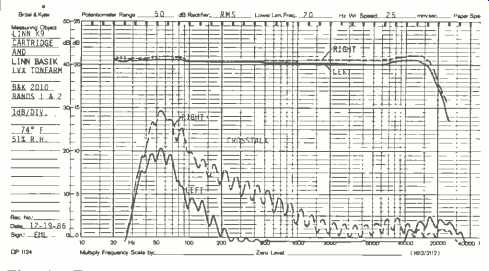
Fig. 1--Frequency response and crosstalk. K9 cartridge in Basik LVX arm,
using B & K 2010 test record.
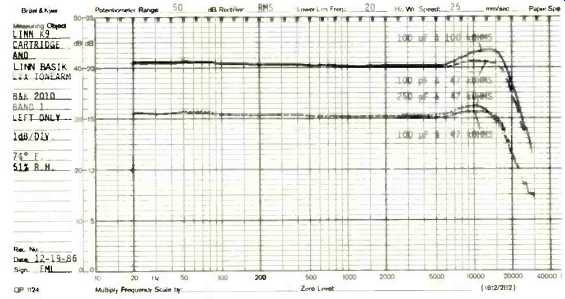
Fig. 2--Frequency response for different values of input impedance and
capacitance.
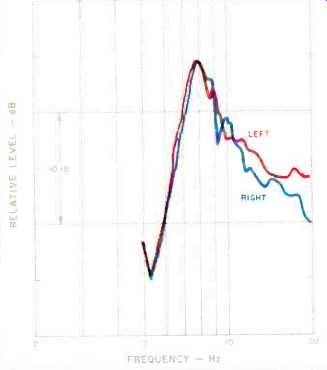
Fig. 3--Low-frequency tonearm/cartridge resonance peaks at 8.0 Hz with
a Q of 5.7.
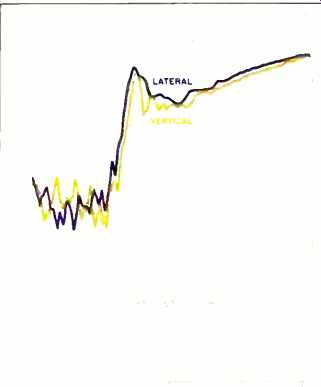
Fig. 4--Response to vertical and horizontal modulation from 2 to 100 Hz
(slow sweep). Note the similarity between the curves (see text).
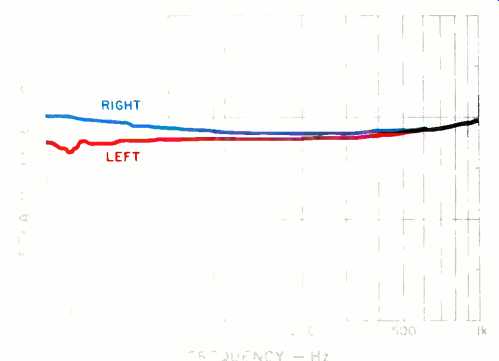
Fig. 5--Slow sweep from 20 Hz to 1 kHz. Note absence of "glitches" (see
text).
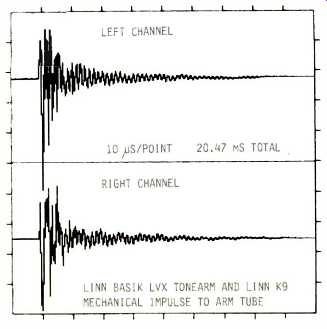
Fig. 6--Output vs. time of arm cartridge when mechanical impulse was applied
to armtube, with arm on rest but not clamped.
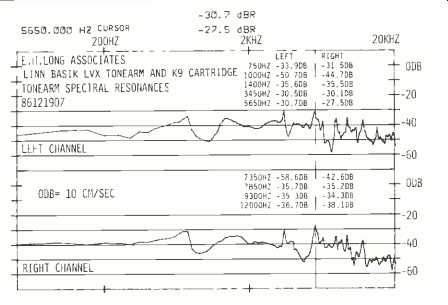
Fig. 7--Spectral output of arm cartridge for mechanical impulses applied
to armtube: traces shown are average of 16 impulses.
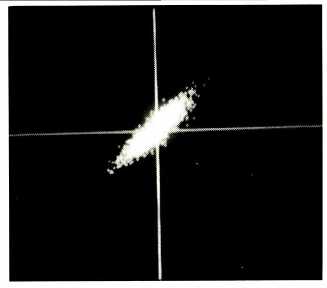
Fig. 8--Interchannel phase difference, using pink noise from B & K
2011, band 7.
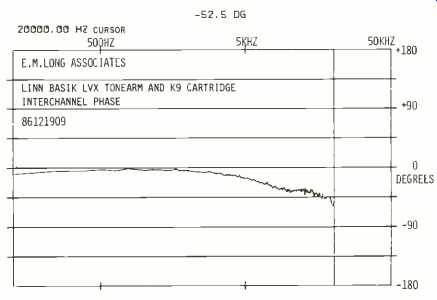
Fig. 9--Interchannel phase difference vs. frequency from B & K 2011,
band 7, pink noise.
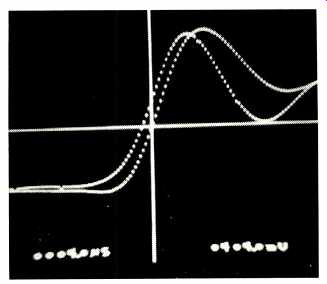
Fig. 10--Time delay between right and left channels. Right channel leads
left by 4.0 µS.
Figure 1 also shows that, above 1.5 kHz, the output of the right channel was about 1 dB higher than the output of the left and that the crosstalk was also higher in the right channel. This was corrected by fussing a little with the azimuth of the stylus. I think it is important to see what can happen if the azimuth is not carefully adjusted.
Figure 2 shows the response of the K9 cartridge after the azimuth was adjusted. Since the K9 is a moving-magnet cartridge, the weight of the coils does not affect the moving mass. The coils are wound with a large number of turns; this increases the K9's output considerably over that of a moving-coil type, which must necessarily have many fewer turns. This does mean, however, that the inductance of the K9's coils is greater. The relatively large inductance of moving-magnet cartridges means that they are generally more susceptible to external loading by the preamplifier inputs. In the top set of curves, the solid curve shows the response of the K9 cartridge when the input resistance is raised to 100 kilohms; the dashed curve is for 47 kilohms.
Both were run with 100 pF of input capacitance loading. The bottom set of curves shows the effect of changing the capacitance loading from 100 pF (dashed curve) to 250 pF (dotted curve). Notice how the increased capacitance raises the output at the peak but also lowers its frequency.
The low-frequency resonance of the tonearm/cartridge combination is shown in Fig. 3. The rise, similar in both channels, peaks at 8.0 Hz; its Q of 5.7 is on the high side. If a subwoofer is used, some care in positioning the turntable will probably be necessary to prevent low-frequency acoustic feedback. Figure 4 shows the lateral and vertical responses from 2 to 100 Hz and indicates that the mass and compliance are distributed fairly evenly in both planes. All of the listening panel members felt that the sound of drums and double bass was bigger and lower for the Linn combi nation than for the reference system. This is because the reference system has a very well-damped low-frequency resonance, and this was heard as "less" bass by the panel members.
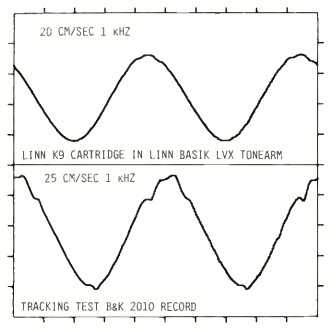
Fig. 11--Tracking test of K9 cartridge in Basik LVX arm shows very little
jitter, which indicates good stability. The mistracking in the lower graph
is with the highest level band of B & K 2010; the performance is quite
good.
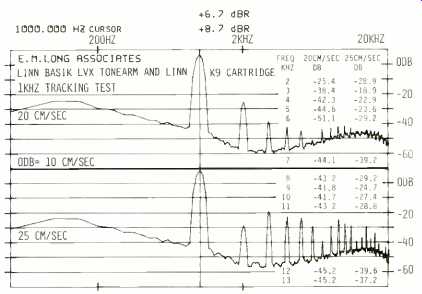
Fig. 12--Spectrum analysis of the cartridge output when reproducing the
test tones of Fig. 11.
The third harmonic (at the cursor position) is 0.56% for 20 cm S and 4.2% for 25 cm S. (Many cartridges cannot track the 25-cm S band at all.)
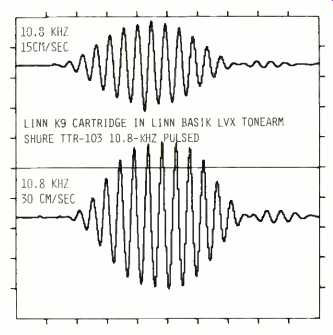
Fig. 13--Response to 10.8-kHz pulse, Shure TTR-103 test record.
Figure 5 shows the response of the Basik LVX tonearm and K9 cartridge to a slow sweep from 20 Hz to 1 kHz. The absence of "glitches" in the response indicates that the combination is free of major resonances which would cause colorations in the sound. The listening panel's very favor able comments about voice reproduction with the Linn combination verify the absence of resonance problems; such problems usually affect the voice range most of all. I was curious to see if any resonances would appear if I didn't tighten the screw that holds the headshell in place. I plotted response curves for this condition, but the fit of the head-shell to the armtube is so snug that it didn't change the shape of the curves at all.
Figures 6 and 7 show the output versus time and the frequency spectrum for a mechanical impulse applied to the Linn armtube. These data agree very well with some of the comments made by the listening panel. The mechanical energy produced by the stylus and entering the tonearm will tend to excite this sort of response. The relatively long decay of energy shown in Fig. 6 will tend to mask some of the subtle inner details of the music. As can be seen in Fig. 7, most of the energy is in the midrange, which will tend to add brightness to the music. Figure 7 also shows that there are a number of peaks in this range. Despite the apparent high-frequency roll-off shown in Fig. 1, the slow decay of this upper-midrange energy enhances the perceived high-end response. Comments about the "projection and clarity of voice and the "brightness" and "sharp" quality of strings and brass seem to correlate well with this phenomenon.
Figure 8 shows the interchannel phase relationship; if it were perfect, we would see a straight 45° line. Here we don't, but the measurement is still very good. Figure 9 shows that the phase difference between the output of left and right channels is only 52.5° at 20 kHz, which means that the time differential is only 7.3 µS. The panel's comments regarding the Linn system's image stability were very favor able, with the reference system providing only slightly superior resolution. Figure 10 shows the time difference between channels when reproducing the 1-kHz square wave of the CBS STR-112 test record. In this case the right channel leads the left by only 4 µS, which is very good.
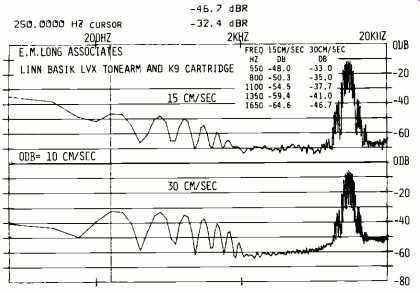
Fig. 14--Spectrum analysis of output from signals shown in Fig. 13. Distortion
is 2.4% at 250 Hz for the 30-cm/S level (bottom trace).
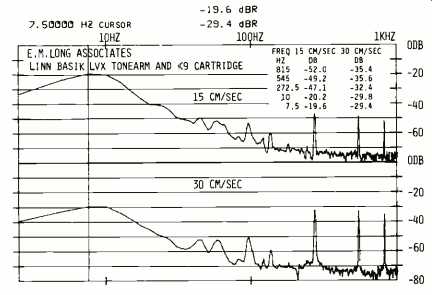
Fig. 15--Spectrum analysis of distortion products from signals shown in
Fig. 13. Note that the frequency range shown runs only to 1 kHz and that
the level at the arm/cartridge resonance drops when the signal level is
raised (see text).
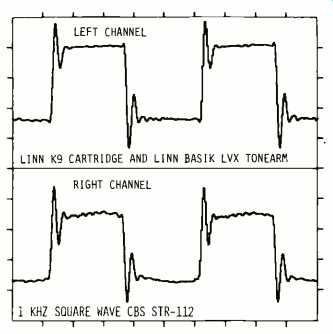
Fig. 16--Response to 1-kHz square wave, using CBS STR-112 test record.
Figure 11 shows the output of the K9 cartridge when reproducing the two highest bands of the 1-kHz signal on the B & K 2010 test record. While the 25-cm/S signal appears distorted, it is very stable. Most cartridges I have tested will not track this band at all, and those that do show a very unstable and jittery waveform. The spectrum for these two levels is shown in Fig. 12. The upper trace, for the 20-cm/S level, shows the second, third, fourth, and fifth harmonics at progressively lower levels. This tends to produce a sound which could be called bright but not necessarily sharp or harsh. The increase in harmonics when switching from the 20- to the 25-cm/S band is greater for the odd than for the even harmonics, and this does result in a harsh sound. Perhaps this is why, when listening to high-level orchestral passages, the panel commented that the Linn combination was "dry" and "reedy" while the reference was "detailed" and "unrestrained." Figure 13 shows the amplitude-versus-time response of the Linn combination for the 10.8-kHz tone burst on the Shure TTR-103 test record. At the 30-cm/S level, a little compression can be seen in the top of the waveform. The effects of this are shown in the spectrum of Fig. 14. Since the 30-cm/S signal is 6 dB higher in amplitude than the 15 cm/S signal, the lower frequency components should also be 6 dB higher in the lower trace. Instead, these components are about 15 dB higher, which means that distortion at these frequencies is increased. These overemphasized lower frequency components impart a "leaden" quality to bells and cymbals. Still, the Linn combination fared well when reproducing high-level, high-frequency sounds. The listening panel members indicated that they felt the performance of the reference system was only slightly better.
In past reports I had noticed that, at higher levels, the output at the lowest frequency shown in the tone-burst spectrum plot was less for the 30-cm/S test signal than for the 15-cm/S signal; I have now investigated this further.
Figure 15 is a more detailed look at the spectrum below 1 kHz. The output at the tonearm/cartridge resonance is about 10 dB lower for the 30-cm/S signal than for the 15-cm/S signal. The only explanation I have for this seemingly incongruous result is that the energy from the stylus/groove inter action is being spread into the upper frequencies by what is called, in mechanics, a "forcing function." After all, the energy comes from the stylus-groove interaction, and if it is used to increase the output at other frequencies, then the energy available to excite the tonearm/cartridge resonance must necessarily be less. I would be interested in any other explanations that readers might have for this phenomenon.
Figure 16 shows the 1-kHz square-wave response of the Linn combination. This is typical for a cartridge which has a fast roll-off near the upper end of the audio spectrum. After you have seen a number of these plots and have compared them to the amplitude-versus-frequency response plots of the same cartridges, you can predict the frequency response fairly well using the square-wave data alone. Since some test reports on cartridges and CD players show square waves but not response curves, this can be a quick way to assess the high-frequency performance.
Conclusions
You should really draw your own conclusions about this arm and cartridge from the data and discussions contained in this report. But for those in a hurry, here is a fairly direct summation. I asked the panel members whether, if they owned the reference, they could also enjoy music as reproduced by the Linn Basik LVX tonearm and the K9 cartridge.
The answer: Definitely yes!
-Edward M. Long
(adapted from Audio magazine, Nov. 1987)
= = = =
Also see:
Linn Axis Turntable (Equip. Profile; May 1987)